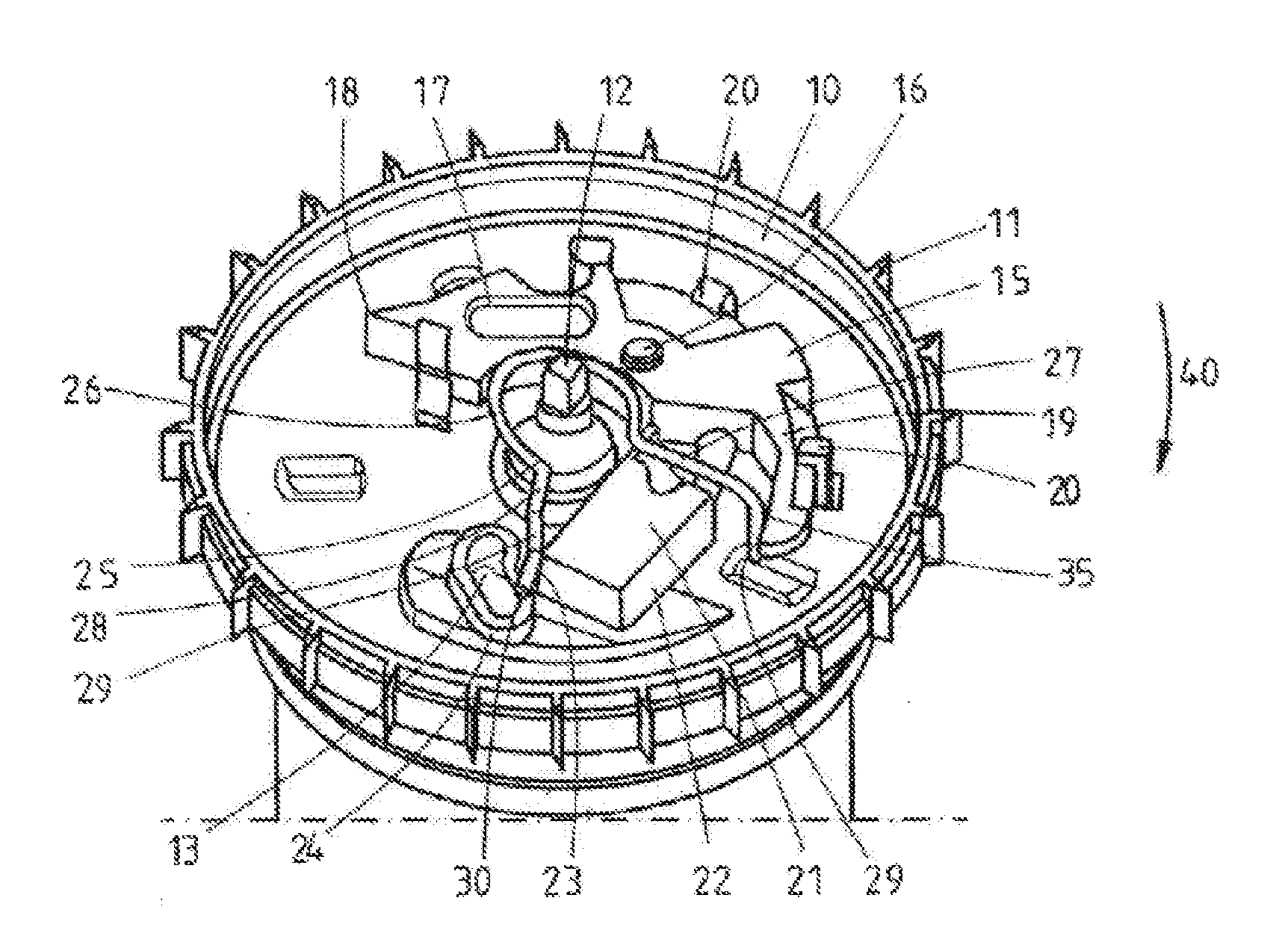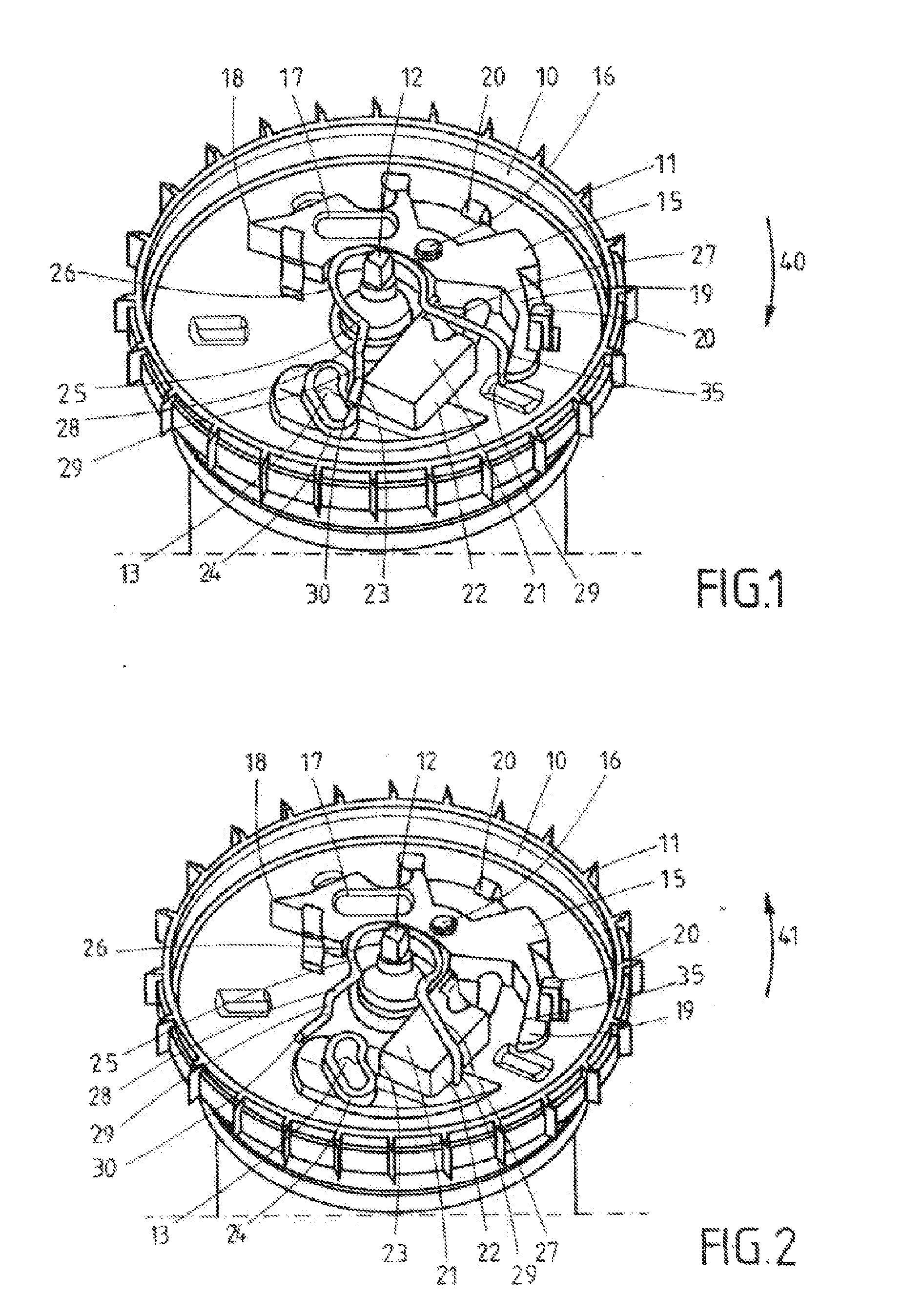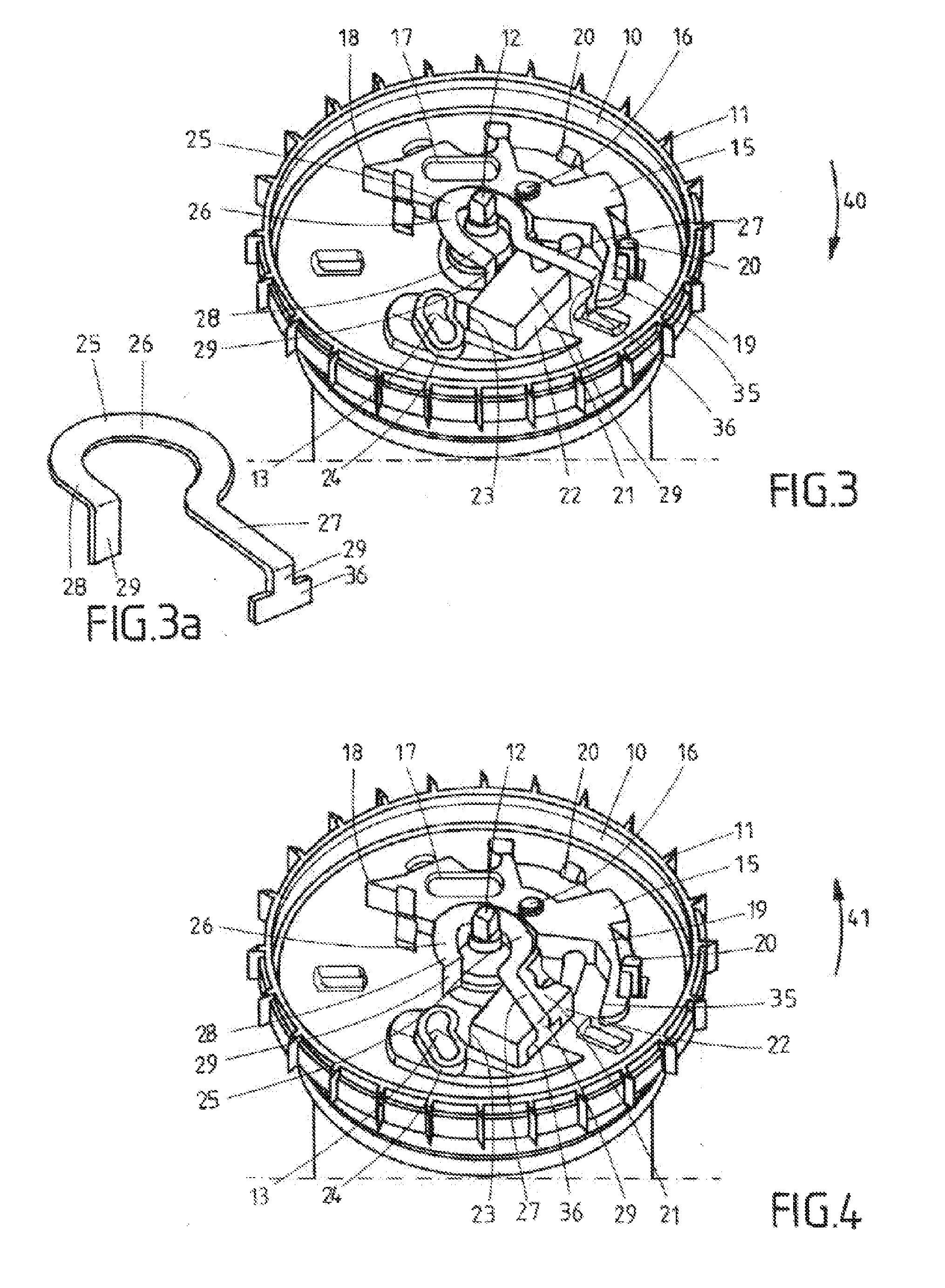Self-Locking Belt Retractor With Deactivation of its Belt Webbing-Sensitive Control System Operating in the Retracting Direction of the Belt Shaft
a belt webbing and control system technology, applied in the direction of belt retractors, vehicle safety belts, vehicle components, etc., can solve the problems of disadvantageous control methods and undesirable rattle noise generation, and achieve the effect of reducing thickness, reducing noise, and reducing nois
- Summary
- Abstract
- Description
- Claims
- Application Information
AI Technical Summary
Benefits of technology
Problems solved by technology
Method used
Image
Examples
Embodiment Construction
[0024]The control plate 10 that can be seen in FIG. 1 is rotatably mounted on a shaft extension 12 and has an outer gearing 11 for coacting with a vehicle-sensitive control system. A slot 13, in which a pivot 14 depicted merely in FIGS. 1 to 4 and arranged on the locking element mounted on the belt shaft (which is not shown in further detail) is configured in the control plate 10. A two-armed inertial mass 15 is furthermore pivotably mounted on the control plate 10 by means of a pivot bearing 16 configured in its central area, wherein the two-armed inertial mass has a blocking arm 17 with an outer blocking tip 18 and a pivot arm 19. The inertial mass 15 is held on the control plate 10 by holding arms 20 mounted on the control plate 10 and correspondingly angled, so that the inertial mass 15 is fixed thereon in particular with its mutual rotation with the control plate 10. As is well known in the prior art and not shown in further detail, the pot-shaped recess of the control plate 10...
PUM
 Login to View More
Login to View More Abstract
Description
Claims
Application Information
 Login to View More
Login to View More - R&D
- Intellectual Property
- Life Sciences
- Materials
- Tech Scout
- Unparalleled Data Quality
- Higher Quality Content
- 60% Fewer Hallucinations
Browse by: Latest US Patents, China's latest patents, Technical Efficacy Thesaurus, Application Domain, Technology Topic, Popular Technical Reports.
© 2025 PatSnap. All rights reserved.Legal|Privacy policy|Modern Slavery Act Transparency Statement|Sitemap|About US| Contact US: help@patsnap.com



